
See & Do in Sigtuna
Experience 1000 years of history
No other place in the world is as rich in runestones as Sigtuna. It's Sweden’s first city and the smallest City Hall is located here.
Sigtuna is Sweden’s first town and holds a thousand years of memories and stories. The town was founded by Erik the Victorious 980 A.D. Traces of the past are visible in every corner and no place on earth has as many runestones. Castles, churches, ruins, runestones and other remnants of the Vikings, as well as an old crofter’s homestead, are all within a close distance. We also have the smallest town hall and the largest airport in Sweden.
The street plan of Sigtuna is largely the same as a thousand years ago. When you walk on Stora gatan, you walk three meters above the original main street. The first coin in Sweden was minted in Sigtuna and the Sigtuna princess Ingegerd, our first female saint, was born here.
Adventure golf is a fun way to acquaint yourself with Sigtuna. The 12-hole course is situated at the beautiful walk along the lakefront. Each hole represents a historic place or building from Sigtuna’s past, and you will get a history lesson and a fun golf experience at the same time. It is suitable for both children and adults.
In the vicinity there are five fantastic castles to explore. Each offers a unique historic atmosphere and is situated in beautiful landscape settings. Visiting the castles is a pleasant outing for both the history enthusiast and for those looking for a fine day in the scenic countryside.
Book a guided tour or discover the area on your own, for example with the help of our walking map or the pamphlet ‘A Rune Stone Walk in Sigtuna’.
You can download your own copy of the Sigtunaguide in pdf-format here. Also useful is the Sigtuna walking map, which you can find here.
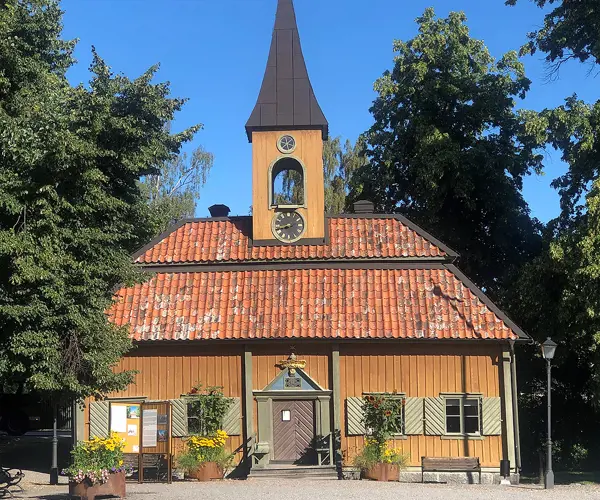
Sigtuna Town Hall
Sigtuna Town Hall is probably the smallest town hall in Sweden, perhaps even in Europe. It was designed in the 1740s by mayor Erik Kijhlman and inaugurated in 1744. Due to limited resources, materials from the old town hall were reused and the rest of the materials were sourced from the inhabitants.
Today, Sigtuna Town Hall is a popular wedding venue, with its beautiful Baroque interior. In what used to be the guardroom of the police, you will find an exhibition displaying stories about the place and the people of Sigtuna.
For wedding reservations and more information, please contact Sigtuna Museum at sigtunamuseum@sigtuna.se.

Mariakyrkan (St. Mary's Church)
Mariakyrkan (St. Mary's Church) was built as a convent church the middle of the 13th century by the Dominican Order. It is the oldest building still in use in Sigtuna and the walls, pillars and roof of the church look much the same as they did then.
Mariakyrkan was built in a transitional style between Romantic and Gothic styles and got a completely different look than the stone churches. It’s size, the color of the bricks and the light in the church room must have made a divine impression on the visitors. It is the first known brick church in the Lake Mälaren area. The bricks were made in ovens to the north of the church.
During the Reformation around 1530 the convent was closed, and the Dominicans were driven away from Sigtuna. Mariakyrkan became a parish church. It is the only medieval church in Sigtuna which survived the Reformation. The two baptismal fonts are the oldest items in the church and there are also two well-kept medieval altarpieces. The four crosses were painted on the walls in the 13th century where the bishop had splashed holy oil during the inauguration of the church.
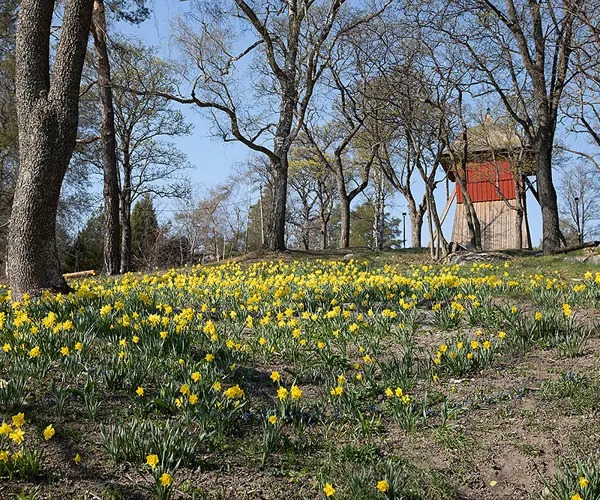
Klockbacken
Klockbacken (“the bell hill”) is a hilly park in central Sigtuna town and a perfect place for someone who wants to enjoy nature, but not walk too far. You will find a wide view to the south, several beautiful walking paths and a popular barbeque area. Klockbacken is a lovely place for play and socialising all year around. During winter, it is a great spot to go sledding.
If you are lucky, you might see a fox, hare or deer. There is also a nice dog exercise area.
Klockbacken is known for various festivities through the years, and you can see the remains of the old folkpark.
The old clock tower was destroyed in a fire 30 June 2016, but has been restored according to old drawings.

Sigtuna Museum
Welcome to Sweden’s first town to take part of stories of seal hunters, Vikings, ruins and flight towers. Sigtuna Stories is an exhibition that tells about the people of the Sigtuna Municipality from the Stone Age to the present.

S:t Olof's Church Ruin
Sigtuna was founded to be the first Christian town in Sweden – the center of the new religion. The powerful church ruin, from the early Middle Ages, holds many secrets.
The construction of St. Olaf’s church probably began in the first half of the 12th century. The remains have been the subject of several smaller scientific excavations in the 2000s, when researchers have been curious about the church’s remarkable architecture. The excavations found that the church remnants of today rest on an older building – perhaps the oldest stone church in Sweden.
St. Olaf’s design is remarkable, the choir is both larger and longer than the nave. The idea might have been to build a long house as grand as the choir but for some reason that did not happen. The building came to a halt, perhaps due to a lack of funds.
Next to the church’s south wall, foundations of a small house with a dry well is still visible today. The little house was built earlier than the church and may have been built over a holy spring, a St. Olaf Spring. During the Middle Ages, as many as seven large stone churches were erected by merchant guilds and wealthy townspeople. Today, the ruins of three remain: St. Peter’s, St. Lawrence’s, and St. Olaf’s (S:t Per, S:t Lars, and S:t Olof).
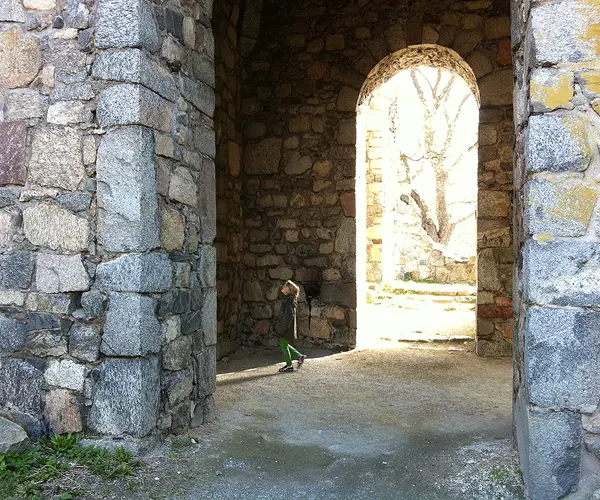
S:t Per´s church ruin
King and church – with common goals
When Sigtuna was founded by King Erik the Victorious around year 980, the intent was to seek control over people and create an empire like the European kingdoms. He already had the knowledge of building a town, but he needed the church to cooperate.
Erik was a modern Scandinavian king. The goal was a kingdom with one king and one God. He would be the king and head of Church. Sigtuna was founded to be the first Christian town in Sweden – the center of the new religion.
There was an unusual portal in the central tower of St. Per’s, which might have functioned as a coronation portal and a place where the King showed himself at feasts such as Christmas, Easter and Pentecost, in a position between God and ordinary people.
During the Middle Ages, as many as seven large stone churches were erected by merchant guilds and wealthy townspeople. Today, the ruins of three remain: St. Peter’s, St. Lawrence’s, and St. Olaf’s (S:t Per, S:t Lars, and S:t Olof).

St. Lawrence Church ruin
Sigtuna was founded to be the first Christian town in Sweden – the center of the new religion. St. Lawrence Church was built around 1100–1200. It was probably a large building of at least 25 meters. Today, you can see the remains of the tower and parts of the northern wall.
During the Middle Ages, as many as seven large stone churches were erected by merchant guilds and wealthy townspeople. Today, the ruins of three remain: St. Peter’s, St. Lawrence’s, and St. Olaf’s (S:t Per, S:t Lars, and S:t Olof).

Rosersberg Palace
Sweden’s oldest letter still in existence is from 1164 and is about the Wenngarn area. Through the centuries various influential people have lived at and ruled Wenngarn, from the House of Vasa, statesmen, knights and privy councillors.
In 1653 the property was sold to Magnus Gabriel de la Gardie who turned the medieval fort into a magical castle with a magnificent Baroque park. In 1916, Sweden’s the first institution for the rehabilitation of people suffering from alcoholism was opened here.
Today, Wenngarn is a thriving village community, with openness and participation being its leading principles. It is free to visit and there are activities for all ages and interests.
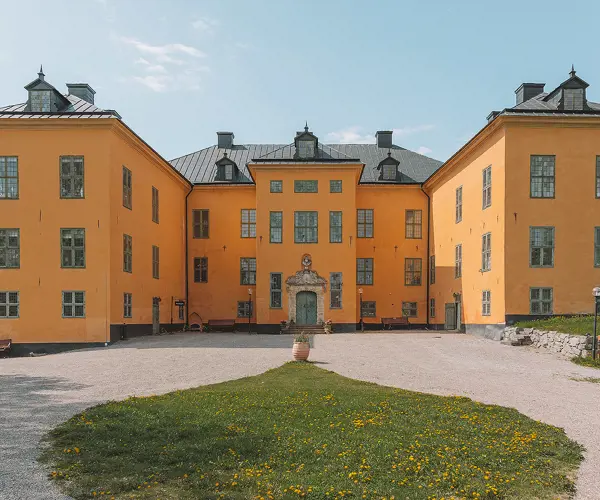
Wenngarn Castle
Sweden’s oldest letter still in existence is from 1164 and is about the Wenngarn area. Through the centuries various influential people have lived at and ruled Wenngarn, from the House of Vasa, statesmen, knights and privy councillors.
In 1653 the property was sold to Magnus Gabriel de la Gardie who turned the medieval fort into a magical castle with a magnificent Baroque park. In 1916, Sweden’s the first institution for the rehabilitation of people suffering from alcoholism was opened here.
Today, Wenngarn is a thriving village community, with openness and participation being its leading principles. It is free to visit and there are activities for all ages and interests.

Skokloster Castle
Skokloster Castle is one of the most beautiful Baroque castles in the world, situated in lovely surroundings on the shore of Lake Mälaren. The castle was built between 1654 and 1676 for Count Carl Gustaf Wrangel, during Sweden’s period as a Great Power in the 17th century. The magnificent white building with its four towers is the largest private residence ever built in Sweden and carries numerous memories and items from past times.
In 1701, Skokloster became an Entitled Estate, a form of ownership which prohibits the owner from selling or giving away parts of the estate. Thus, its vast collection was not dispersed, and the castle has remained almost untouched. You can experience the interiors as they were 350 years ago. The count’s room is furnished in the same way as it was then and in the unfinished banqueting hall many of the builders’ tools remain.
Visit the Wrangel state apartment on your own or take a guided tour through beautiful rooms and halls that are filled with original furnishings from different centuries. There is magnificent arts and crafts, thrilling paintings and the castle also has also a large armoury. There are beautiful items wherever you look – furniture, paintings, textiles, glass, porcelain and more.
Enjoy a tour, go on a castle safari and have a look in the museum shop.
In the summer you can take boats to Skokloster Castle from Stockholm, Uppsala and Sigtuna.
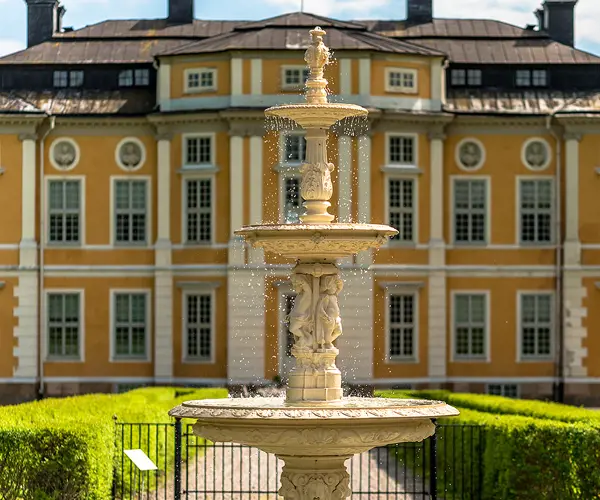
Steninge Castle
The area around Steninge has a history reaching back into prehistoric times. To the southwest of the castle there is an ancient fort with a vast view over Lake Mälaren.
Steninge Castle was inaugurated in 1705 and designed by the famous architect Nicodemus Tessin the Younger, who also designed the Royal Palace in Stockholm. The exquisite buildings are surrounded by a spacious garden. The castle’s developer Carl Gyllenstierna had a vision to show art and culture of the highest class. Centuries later, his vision still exists in Steninge.
Steninge shops and events are situated in the unique stone barn from 1873. The well-known glass design company, Kosta Boda, has a shop in the barn, selling designer glass art and glassware. You will also find a restaurant in a unique historic setting, as well as the Gallery Steninge.
The castle is a private residence and not open for tours. The park is open daily 12.00-16.30.
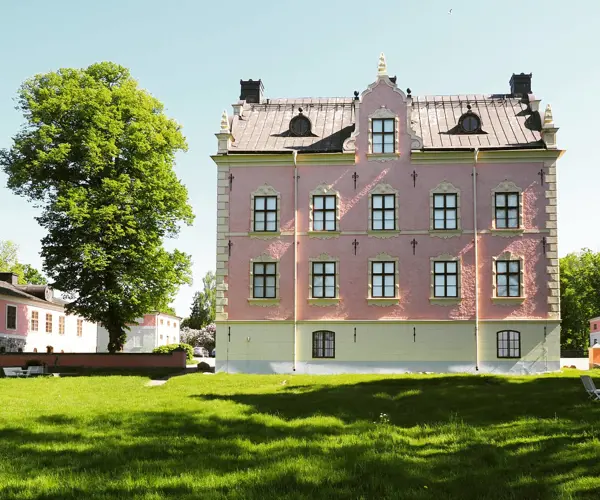
Skånelaholm Manor House
The romantic castle is situated in an old cultural landscape at the beautiful surroundings of Lake Fysingen. Skånelaholm was built by the president of the Court of Appeal Andreas Gyldenklou about 1639–1643 in German-Dutch late Renaissance style. The estate was mentioned as early as 1276 when King Magnus III sold it to Sko Abbey. During the Reformation it was confiscated by King Gustav Vasa. The castle has only had a few owners and in 1962 it was donated to the Royal Swedish Academy of Letters, History and Antiquities.
The castle contains many well-preserved historical interiors and has a large collection of furniture, art, porcelain, books, allmoge (country) objects and wagons. There is also a beautiful English landscape garden. Don’t miss the large Sälna runestone in the northern part of the park. The area around Skånelaholm is particularly rich in runestones and one of the waterways of the Viking age went by here.
